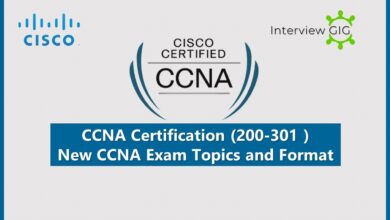SpringHill Suites New York Midtown Manhattan/Fifth Avenue

Welcome to the heart of New York City, where the bustling streets meet modern luxury at SpringHill Suites Midtown Manhattan/Fifth Avenue. This hotel is perfect for travelers who want to experience everything that Manhattan has to offer while staying in a comfortable and stylish environment. From its prime location to its top-notch amenities, there’s no better place to stay than SpringHill Suites. So let’s dive into all this hotel has to offer!
Location
Location is key when it comes to traveling, and SpringHill Suites Midtown Manhattan/Fifth Avenue has got you covered. Situated in the heart of New York City, this hotel is just steps away from the city’s most iconic landmarks. Whether you’re here for business or pleasure, this location offers easy access to everything that makes NYC so special.
The hotel is conveniently located near several subway stations, making it easy to explore other parts of the city. You can easily hop on a train and visit popular attractions like Central Park, Times Square and the Empire State Building.
If shopping is your thing, then you’ll love staying at SpringHill Suites. The hotel is located on Fifth Avenue – one of New York’s premier shopping destinations. From high-end designer boutiques to trendy streetwear shops, there’s something for everyone here.
SpringHill Suites’ location puts guests right in the middle of all that Manhattan has to offer – making it an ideal choice for travelers looking for convenience and accessibility during their stay in New York City.
Accommodations
The accommodations at SpringHill Suites New York Midtown Manhattan/Fifth Avenue are spacious and modern, providing guests with a comfortable and convenient stay in the heart of New York City.
Each suite is designed to maximize space with separate living areas and bedrooms, allowing for privacy and relaxation. The contemporary decor features soothing neutral tones, creating a calming atmosphere amidst the bustling city environment.
Guests can enjoy amenities such as complimentary Wi-Fi, flat-screen TVs with premium channels, mini-fridges, microwaves, coffee makers and more. The beds are plush and inviting while the bathrooms feature luxurious showers that will make you feel pampered.
In addition to standard suites, larger family suites are available for those traveling with children or groups looking for extra space. These family-friendly accommodations offer sofa beds along with cribs or rollaway beds upon request.
SpringHill Suites offers well-appointed accommodations that cater to both business travelers and vacationers alike seeking comfort during their stay in NYC.
Amenities
SpringHill Suites New York Midtown Manhattan/Fifth Avenue offers a wide range of amenities designed to enhance the guest experience. The hotel features a fitness center equipped with cardiovascular equipment and free weights, allowing guests to stay active during their stay.
For business travelers, the hotel offers a 24-hour business center complete with computers and printing services. High-speed internet access is available throughout the property, ensuring that guests can remain connected at all times.
Guests can also enjoy complimentary breakfast each morning in the hotel’s dining area. The breakfast buffet includes hot items such as eggs and bacon, as well as fresh fruit and pastries.
In addition to these amenities, SpringHill Suites New York Midtown Manhattan/Fifth Avenue provides daily housekeeping service, laundry facilities on-site for guest use, and valet parking for those arriving by car. For added convenience, the front desk staff are available 24 hours a day to assist guests with any needs or requests they may have during their stay.
The variety of amenities offered at this hotel ensures that guests have everything they need for an enjoyable and comfortable stay in New York City.
Restaurant and Bar
The Restaurant and Bar at SpringHill Suites New York Midtown Manhattan/Fifth Avenue offers guests a taste of the city’s culinary scene within the comfort of their hotel. The restaurant serves up American cuisine with a modern twist, using locally sourced and seasonal ingredients to create delicious dishes.
For those looking to unwind after a long day exploring the city, the bar provides an inviting atmosphere to sip on handcrafted cocktails or enjoy a glass of wine from their extensive list. With its sleek design and cozy seating options, it’s the perfect spot for catching up with friends or colleagues.
Guests can also indulge in breakfast each morning at the restaurant, which offers both continental favorites such as pastries and cereals as well as hot items like eggs cooked-to-order and waffles. It’s a great way to start your day before venturing out into Manhattan.
Dining at SpringHill Suites New York Midtown Manhattan/Fifth Avenue is an experience not to be missed during your stay in NYC. With its delectable cuisine, stylish ambiance, and friendly service staff – you’re sure to have an unforgettable dining experience without ever having to leave your hotel!
Things to Do Nearby
SpringHill Suites New York Midtown Manhattan/Fifth Avenue is located in the heart of New York City, making it an ideal destination for those looking to explore the city’s iconic landmarks and attractions. Here are some of the best things to do nearby.
First up, take a stroll through Central Park and enjoy its beautiful landscapes, fountains, and sculptures. The park also has several recreational activities like boating on the lake or visiting one of its many playgrounds.
Next, check out some of New York City’s famous museums such as The Metropolitan Museum of Art or MoMA. These cultural institutions house thousands of works by renowned artists including Vincent van Gogh and Pablo Picasso.
For shopping enthusiasts, Fifth Avenue offers a variety of high-end designer stores such as Gucci and Prada along with department stores like Saks Fifth Avenue.
Those looking for entertainment should head over to Broadway where they can catch one-of-a-kind musical performances that will leave them spellbound.
Foodies can indulge in delicious meals at restaurants ranging from classic American diners to Michelin-starred eateries like Le Bernardin.
There’s no shortage of things to do near SpringHill Suites New York Midtown Manhattan/Fifth Avenue regardless if you want art & culture or just want to experience everything NYC has to offer!
SpringHill Suites New York Midtown Manhattan/Fifth Avenue Reviews
One of the best ways to get an idea of what a hotel is like is by reading reviews from other travelers. The SpringHill Suites New York Midtown Manhattan/Fifth Avenue has received many positive reviews from guests who have stayed there.
Some reviewers have praised the hotel’s central location, which makes it easy to access many of New York City’s top attractions. Others have noted that the rooms are spacious and comfortable, with all the amenities you need for a relaxing stay.
Many guests have also commented on how friendly and helpful the staff at this hotel are. Whether you need directions or recommendations for things to see and do in the area, they will be happy to help.
If you’re looking for a place to stay in midtown Manhattan, consider booking a room at SpringHill Suites. With its prime location, comfortable accommodations, and excellent service, it’s no wonder so many travelers give this hotel high marks in their reviews!
Conclusion
SpringHill Suites New York Midtown Manhattan/Fifth Avenue is a fantastic choice for travelers who want to experience the hustle and bustle of New York City while also enjoying comfortable accommodations. The location is prime, offering easy access to some of the city’s most popular attractions, including Times Square and Rockefeller Center.
The hotel’s amenities are top-notch, from the fitness center to the complimentary breakfast buffet. And after a long day of exploring the city, guests can unwind at the rooftop bar with stunning views of Manhattan.
SpringHill Suites offers an excellent value for its location and amenities. Whether you’re visiting NYC for business or pleasure, this hotel has everything you need for a memorable stay in one of America’s greatest cities.



